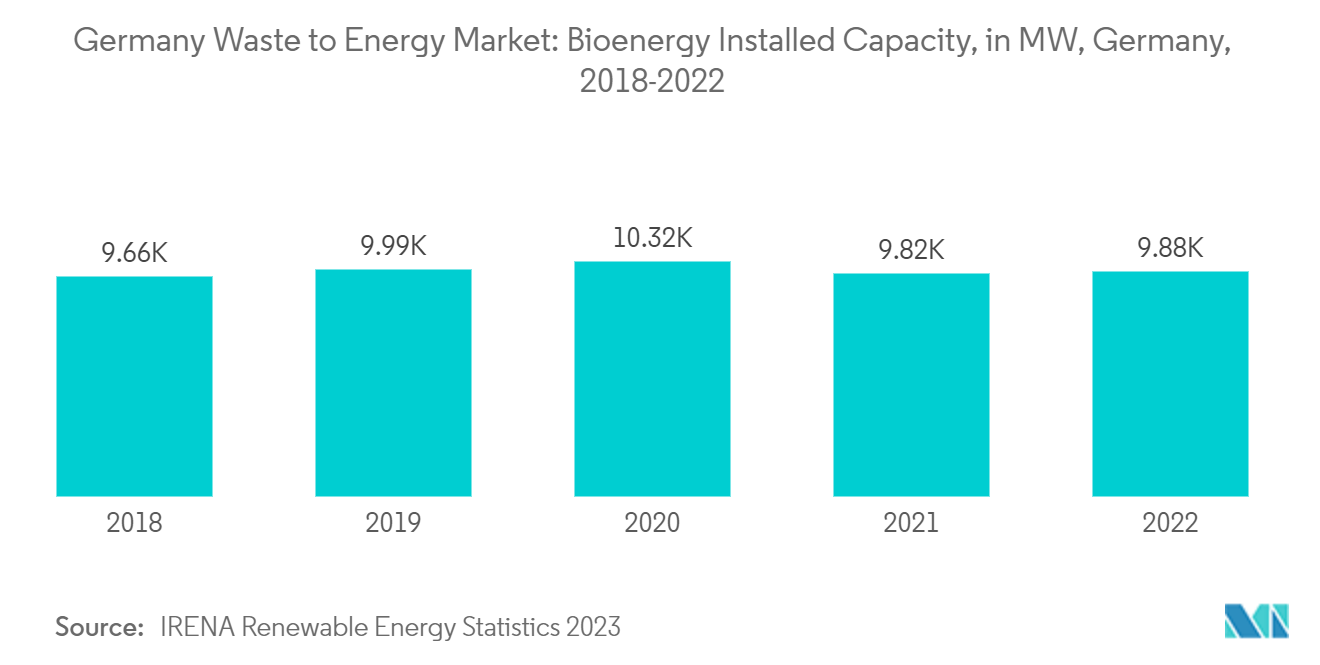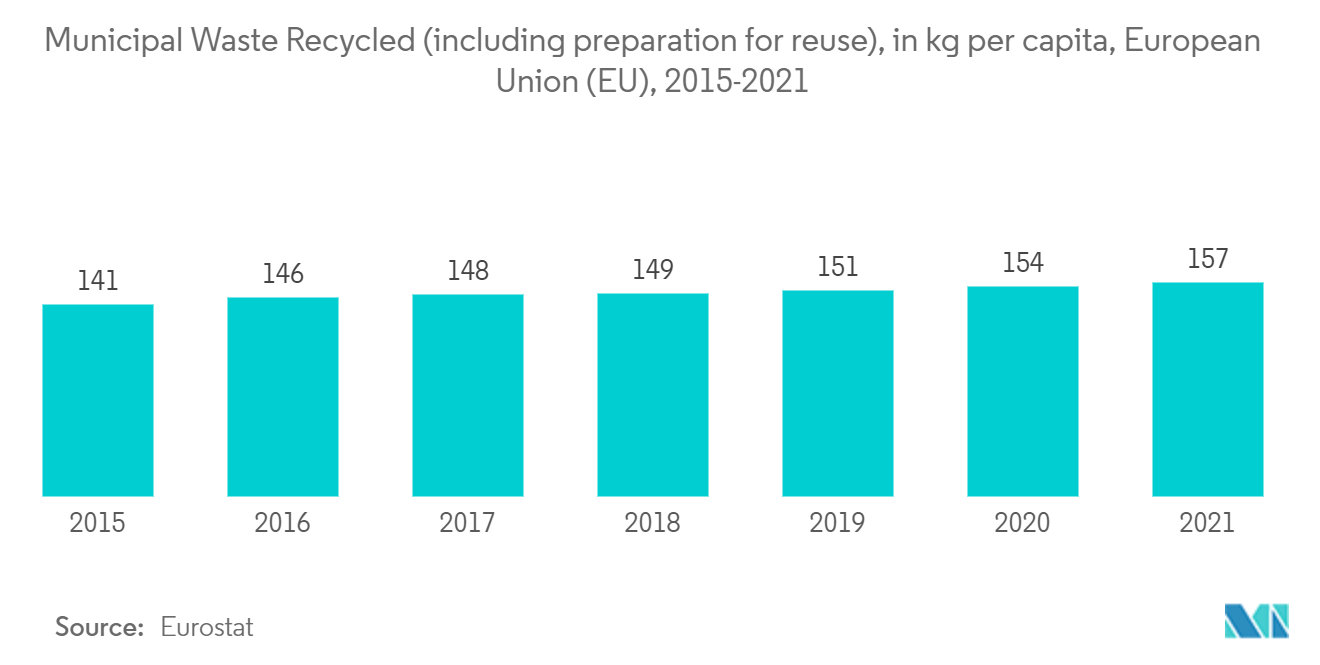Market Trends of Germany Waste-to-Energy Industry
Thermal Based Waste-to-Energy Conversion is Dominating the Market
- Thermal or municipal solid waste incineration involves waste combustion, which generates flue gases. These flue gases produce steam for electricity production and district heating or cooling.
- The primary goal of the incineration process is to reduce the volume and mass of municipal solid waste (MSW) and to make the waste chemically inert in a combustion process without the need for additional fuel. The utilization of the incineration facility is considered economical and productive when the waste collected for the process has a calorific value of more than 7 MJ/kg.
- Regarding technology, thermal processing is among the most popular in the WtE market. Under thermal conditions, incineration is the most prevalent and approved technology. According to the Federal Statistical Office (Destatis), over 156 waste incineration plants were operational in Germany as of 2021. However, due to the lower initial investment, capital cost, and O&M cost per ton, co-processing and gasification are economical options. Future waste streams in Germany are determined by considering the emergence and availability of wastes and residues potentially usable for thermal treatment and the connected capacity developments of energy recovery facilities.
- At present, incineration is the most well-known WtE technology for MSW processing. The gasification and pyrolysis processes produce a combustible synthetic gas (syngas) that can either be used to generate electricity or further refined and upgraded for direct generation in a gas turbine or engine.
- According to International Renewable Energy Agency, in 2022, Germany's total bioenergy installed capacity accounted for 9880 MW, more significant than 9825 MW in 2021. Thus, with increasing bioenergy capacity, Germany's waste-to-energy market is expected to grow.
- On the flip side, Germany has significantly shifted its focus with respect to municipal waste disposal methods from disposal to prevention and recycling. Although municipal waste represents only around 10% of total waste generated in the country, its prevention can reduce the environmental impact during the waste conversion phase and through the life cycle of the products consumed.
- A life-cycle assessment of different waste management options indicates that three to five times more energy can be saved through alternative strategies, such as waste prevention, reuse, recycling, and composting, compared to generating energy by combustion.
- For instance, an incinerator can burn one ton of paper and generate about 8,200 megajoules of energy. However, recycling the same material saves about 35,200 megajoules of energy. As a result, several European countries, including Germany, have started to focus more on recycling, which is restraining the studied market.
- However, the increase in energy generation through waste in Germany could be primarily attributed to the banning of landfills in 2005 due to the rise in methane emissions. The ban on landfills will likely increase demand for waste-to-energy plants to accommodate the waste initially going into landfills.
- Thus, owing to the above points thermal based waste-to-energy conversion is expected to dominating the Market.

Increasing Recycling Rate of Waste in Germany Expected to Restrain the Market
- Germany has high % recycling rates of 67.6% for household waste and around 70% for industrial and commercial waste. In addition, there are only over 156 thermal waste incineration plants operational in Germany, with a capacity of over 25 million tons, while waste generation is increasing exponentially. Furthermore, there is the limited energy efficiency of waste incineration plants, which is expected to hinder the growth of the waste-to-energy market in the country.
- The recycling rate of waste in Germany remains among the highest in the world and offers more excellent economics than waste incineration, which has affected market growth in the country.
- In addition, the adoption of the resolution by the European Commission to turn Europe into a more circular economy and boost the recycling of municipal solid waste to more than 65% by 2035 is expected to affect the market for incineration as well.
- Moreover, the eventually difficult and expensive disposal of solid combustion residues raises severe environmental concerns. Besides, the insecurity and partly even the lack of long-term stable market conditions for the waste-to-energy market are expected to restrain the growth during the forecast period.
- Thus, owing to the above points, the increasing recycling rate of waste in Germany is expected to restrain the market.

